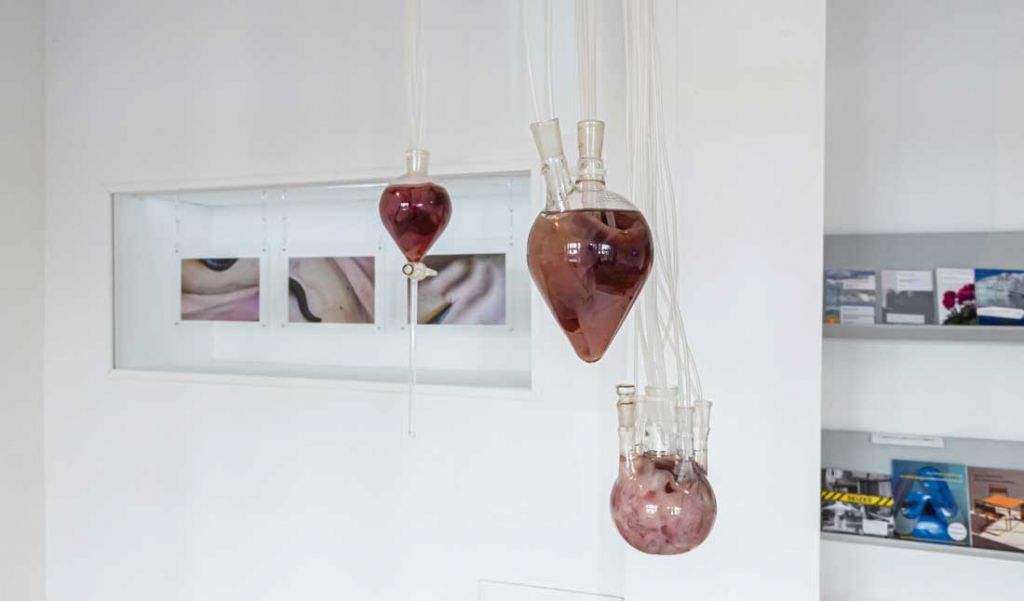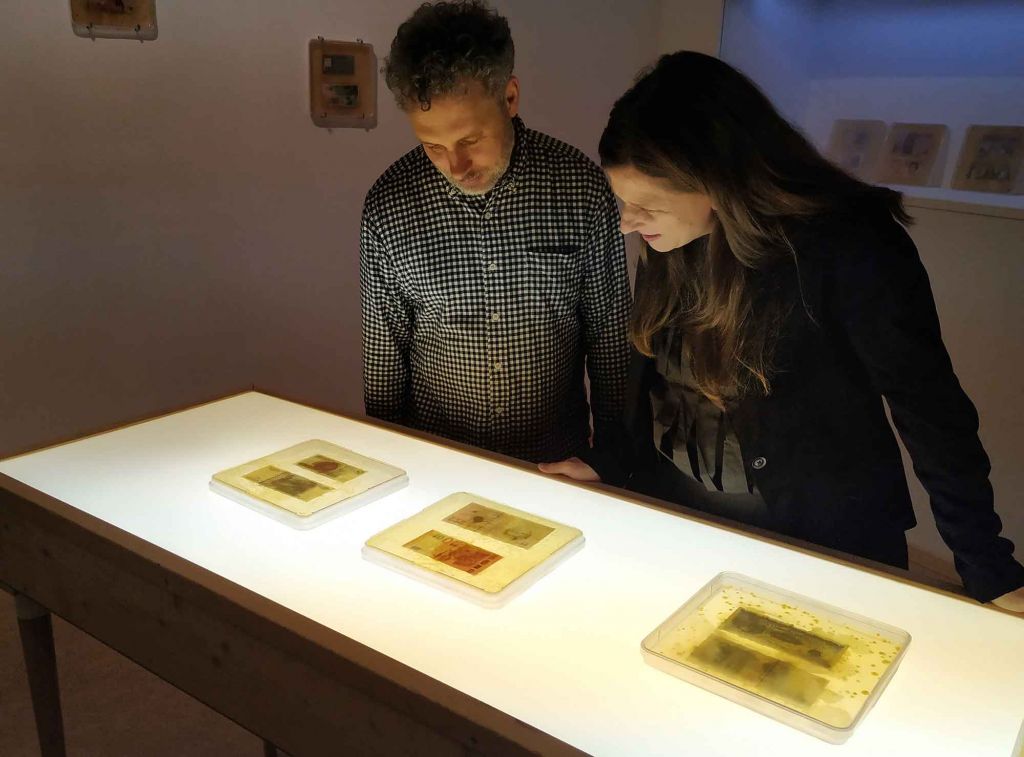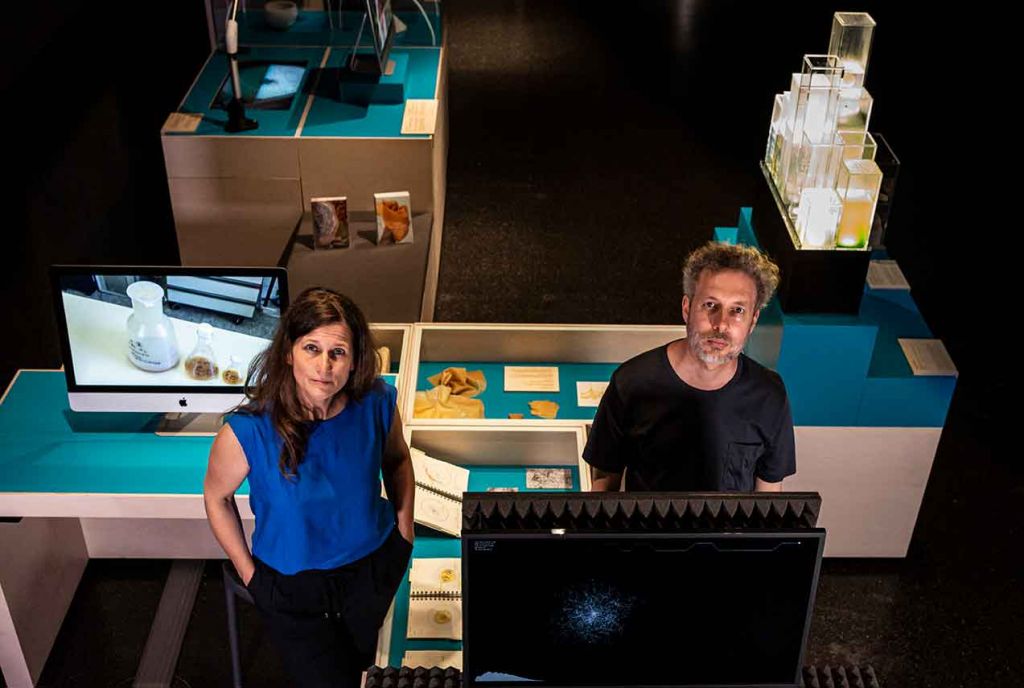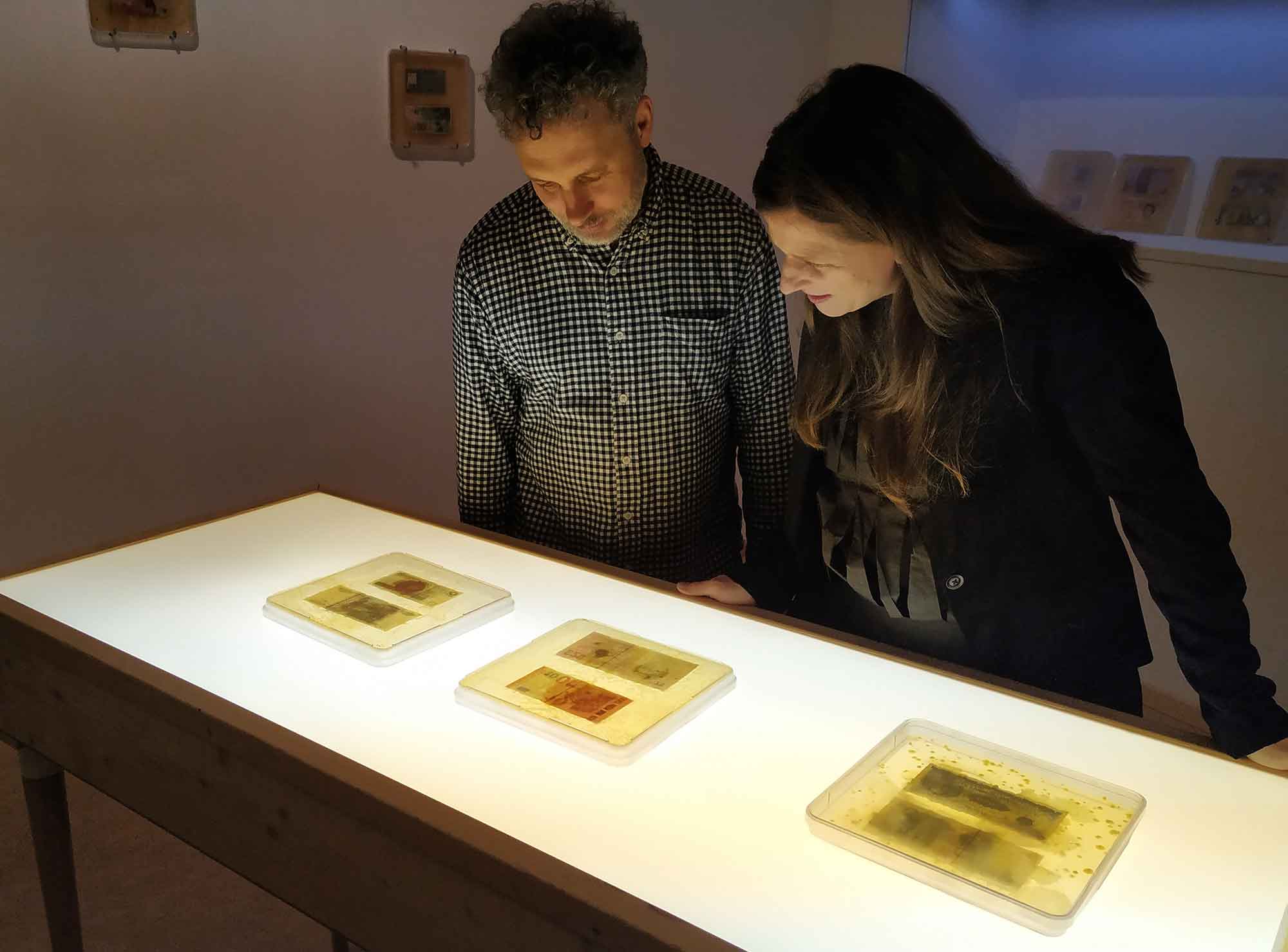Interview by Lyndsey Walsh

Much like the projects that Art Laboratory Berlin gravitates towards, the space itself defies any and all categorical boundaries traditionally upheld in the art world. ALB, directed and founded by the collaborative team of Regine Rapp and Christian de Lutz, functions as an exhibition space, research group, and platform for bringing together artists, scientists, and researchers to discuss impending issues of our time related to life, technology, and culture.
Since 2006, the space has created interdisciplinary art programming with a special focus on the connection between art and science in Berlin. ALB has also invited artists and researchers from all over the world to participate in their cross-disciplinary engagements. Of the nearly 50 exhibitions curated and other transdisciplinary events held, ALB has organised international conferences and collaborative research projects with neighbouring institutions and has published a number of catalogues and anthologies.
The space has not only housed artworks from prominent interdisciplinary artists such as Maja Smrekar and Anna Dumitriu, but they have also sought out to work with important artists of the current time on issues most pressing locally and globally. While ALB tackles many pressing issues with their work and highlights numerous curatorial topics, the recurring themes of interspecies relationships, eco-feminist narratives, and BioArt are consistent in ALB’s curatorial interests.
Most recently and in light of COVID-19, ALB has teamed up with Bio Club Tokyo to host a network for Hybrid Arts and DIY Bio Cultures in their Viral Cloud, which brings together artists, researchers, and scientists from around the world to connect on a digital platform. Currently on display at the Futurium is Mind the Fungi, which features ALB’s collaboration with Theresa Shubert, Fara Peluso, and the TU Berlin’s Institute of Biotechnology. ALB’s next exhibition, Paired Immunity, is set to debut in February of 2021, featuring the work of Marta de Menezes and Luís Graça.


Can you tell our audience that is not familiar with your work more about your background and what goes on at Art Laboratory Berlin (ALB)?
Regine Rapp & Christian de Lutz: Regine studied Art History and Russian Studies in Berlin, Freiburg and St. Petersburg, Russia. Chris studied Art History and Fine Arts in New York. Together with other colleagues, we founded ALB in 2006; since 2009, we have been the co-directors. ALB was founded as a platform in interdisciplinary art practice, but from almost the beginning, art and science played a major role. Since 2011 our primary focus has been artistic research and practice at the meeting point of art, science and technology. At ALB, we’ve curated near to 50 exhibitions together, initiated numerous talks, workshops and seminars, published several books (anthologies, catalogues, artists’ books and others) and conceived and realised four international conferences.
What have been the challenges that you have found in cultivating and growing Art Laboratory Berlin into the space that it has become today?
Certainly, funding is always a challenge. In the last few years, we have enjoyed support from several grants connected to the city of Berlin (Berlin Senate) as well as the support of various foundations. Also, while there is a growing community of artists in Berlin working in Hybrid Arts, there are few places in Berlin, or elsewhere in Germany, dedicated to supporting innovative practice between art and science. What has been very encouraging over the last five years is a growing interest and flexibility on the part of scientists. For this, we are very thankful. It’s also interesting to see a growing public, which not only comes from the arts but also from people interested in the sciences and DIY and hacking culture. Many of the artworks we have exhibited have come with their own challenges, especially those containing living materials. Still, we have welcomed these challenges; they have become the spice of life literally to us.
Another challenge is the lack of knowledge and appreciation of Hybrid art – and with it, artistic research. On the one hand, we can perceive impressively intense positive feedback from the public and the press about our program of contemporary art and urgent 21 C topics (climate change, biotechnology, to name only a few of our related fields). On the other hand, we still perceive a ‘hierarchy of knowledge’: Coming from and being connected to academia, I (RR) often see a hierarchy between scholars from science and humanities on the one hand and artistic research from artists active in the field of hybrid arts.
Art Laboratory Berlin has hosted not only exhibitions with living materials and objects of science but also conferences and symposiums with both artists, humanities experts, and scientists. Can you tell us more about how you bring together these different groups of people?
Many of the artists we work with are equally active and confident in the lab and the studio. At the same time, an important part of their artistic research includes the ‘posthumanities’ such as STS and Posthuman feminist and queer theory. It seems natural to us to include scholars from these disciplines and scientists alongside artists in talks and conference panels. When we organise conferences and symposia, the mixing of disciplines is very important to us and different from many academic conferences we have attended, where academic scholars talk during the day, and the artists present in the evening (seemingly as entertainment). By combining scholars from science and humanities with artists within panels, our conferences have produced fruitful interdisciplinary discussions, some of which have led to common projects.
That said, we recognise that each discipline has its own goals and culture. In the end, we see our purpose in supporting artists. In our curating, we see theory as serving artistic goals. We are opposed to the use of art or artworks solely as illustrations of theory or as a form of science communication. Artistic research and practice, especially in Hybrid Arts, has a much greater potentiality, in our opinion, than pure theory. And, of course, the goals of artistic research are separate from those of scientific research.
What has been your favourite exhibition or event that you have curated so far, and which artist were you most excited to have featured?
That question, of course, is impossible to answer. But we’ll use this occasion to mention our most recent exhibition, The Camille Diaries, with a symposium of the same name. We were able to exhibit some artworks we have long wanted to, as well as work with an amazing mix of artists. Some we have worked with for years; others were quite new to us. Finally, the challenges of this year required us to be quite intimately involved in some of the artistic production, in several cases producing the works with our own hands. Finally, we concluded the project with the symposium THE CAMILLE DIARIES which included all the artists as well as fascinating guest speakers from gender and cultural studies, philosophy, anthropology, biomedicine and biology.
What do you think about BioArt and Biodesign’s place in contemporary art now? Do you think it is still as controversial as it used to be?
We think both fields remain exceptionally topical. We’re not sure if either really has a place in what can now ironically be called ‘contemporary art’. The latter is still largely based on aesthetic structures from the 1960s. And even in its supposedly independent forms, such as biennales, it is heavily connected to and reliant on the market. BioArt, meanwhile, exists pretty much independently of the market. We’d be rather worried if this changed. What makes BioArt both refreshing and relevant is that it exists in a dialog with life (in the widest sense of the word, biologically, sociologically, epistemologically and aesthetically), as opposed to the desires of collectors.
We think the most important, at the moment, is to create an infrastructure for this practice to exist on its own. Currently, funding has created its own complex set of headwinds, such as the current pressure on artists in the EU to create works relating to AI and machine intelligence to get funding. On another level, the support of academia creates its own pressure for conformity. We would suggest that the goals of BioArt and the ‘Posthumanities’ are not the same, and the latter tends to subsume all material towards its own goals. In short: while academia can provide a safe harbour for hybrid artists, this too is not an ideal solution.
What are the biggest issues that you think our planet is facing right now, and how do you see art engaging with them?
Certainly, it is a sum of crises resulting from modern industrial destruction of the environment, the climate crisis most of all, but many related crises. While individual artworks, performances, and workshops can lay a bridge between the public and an understanding of the ongoing devastation of our time and perhaps even propose solutions, we think hybrid practice in general needs to (and at it best succeeds in) challenging modernity’s division between the human and nonhuman. We’re not sure if this chasm can really be overcome in North America or Europe. Perhaps, for cultural and epistemological reasons, this may be achievable in East and SE Asia. As this region promises to become central to our century, we see some hope. But we also see the necessity of new forms of art to bring us, as a species, ‘back into the whole.’
What does Art Laboratory Berlin have planned for the upcoming year?
We’ll start off with Paired Immunity, an exhibition by Marta de Menezes and Luis Graça, in which the presented projects are based on a dialog between the artist (Marta) and an immunologist (Luis) and deal with central aspects of life and immunity. Later in the year, we have a series of performances and workshops as well as an exhibition and symposium, Under the Viral Shadow, exploring art, life and technology in these strange times. Off the public space, we have been co-hosting a series of online meetings between artists, scholars and DIY Bio practitioners in Berlin and Tokyo with our colleagues at Bio Club Tokyo. Our goal has been to build ties for exchange and, hopefully, in the coming years, opportunities.
What is your chief enemy of creativity?
Outdated structures and hierarchies – and thick administration.
You couldn’t live without….
…Fungi, in all its wonderful forms and capabilities.






